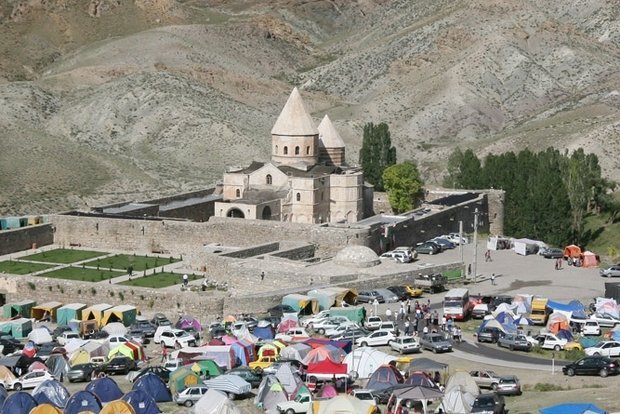Worldwide Armenians to reunite at St. Thaddeus

TEHRAN – Hundreds of Christian worshippers are getting prepared to head for St. Thaddeus to observe a religious ceremony passed down from generation to generation.
For the 65th consecutive year, pilgrims from Iran, Armenia, Syria, Lebanon, the Netherlands, France, Austria, Germany, Canada and some other countries get together, this year from July 25 to 27, to observe a ceremony called Badarak in one of the world’s oldest monasteries.
Attendees commemorate the martyrdom of St. Thaddeus, one of the twelve disciples killed while he was preaching the Gospel. The legend says, a church dedicated to him was first built in 68 CE where Qareh Klise is standing.
The festivity is of high importance for Iranian-Armenians who mostly come from the cities of Tabriz, Urmia, Tehran, Isfahan and Qazvin, to stage the reunion in groups and families. It also provides them opportunity to go on holiday and visit distant relatives.
Baptism of children and youngsters along with performances of traditional songs and dances are amongst highlights the event.
Also known as the Qareh Klise (“the Black Church”), the church is one of the oldest surviving Christian monuments in the country. It is situated in West Azarbaijan province, some 20 kilometers form Maku, adjacent to the borders of Armenia, Azerbaijan and Turkey.
The ancient Church shows off elaborate bas-reliefs of flowers, animals and human figures on its façade and exterior walls. It bears verses of Old and New Testament in Armenian calligraphy as well.
Together with St. Stepanos Monastery and the Chapel of Dzordzor, Qareh Klise was placed on the UNESCO World Heritage list in 2008 under the name “Armenian Monastic Ensembles of Iran”.
All the three sites are located in West Azarbaijan and are of high significance from historical and cultural perspectives. They bear credible testimony to interchanges with the ancient regional societies in particular the Byzantine, Orthodox and Persian.
UNESCO says that the churches bear examples of outstanding universal value of the Armenian architectural and decorative traditions.
AFM/MG
Leave a Comment